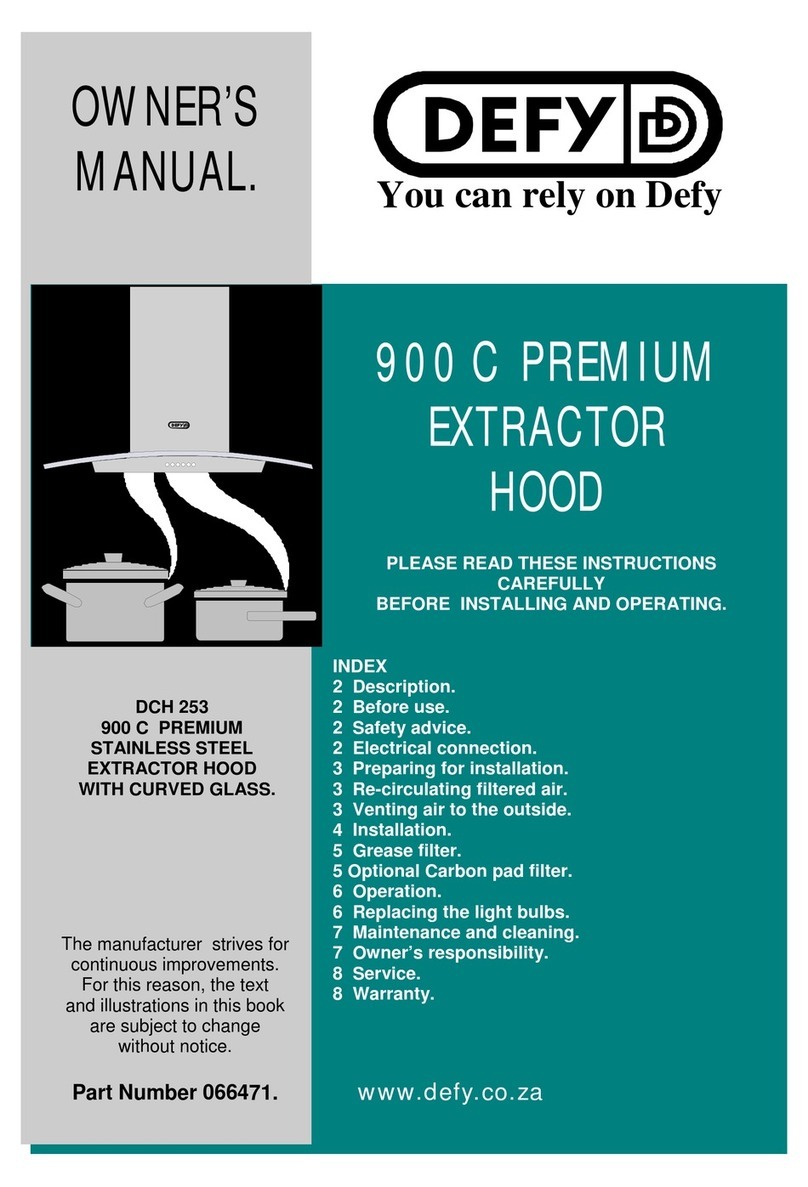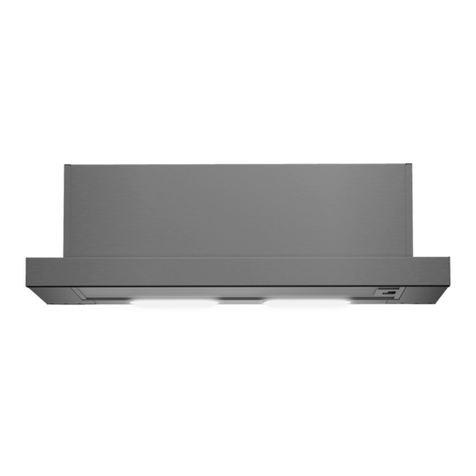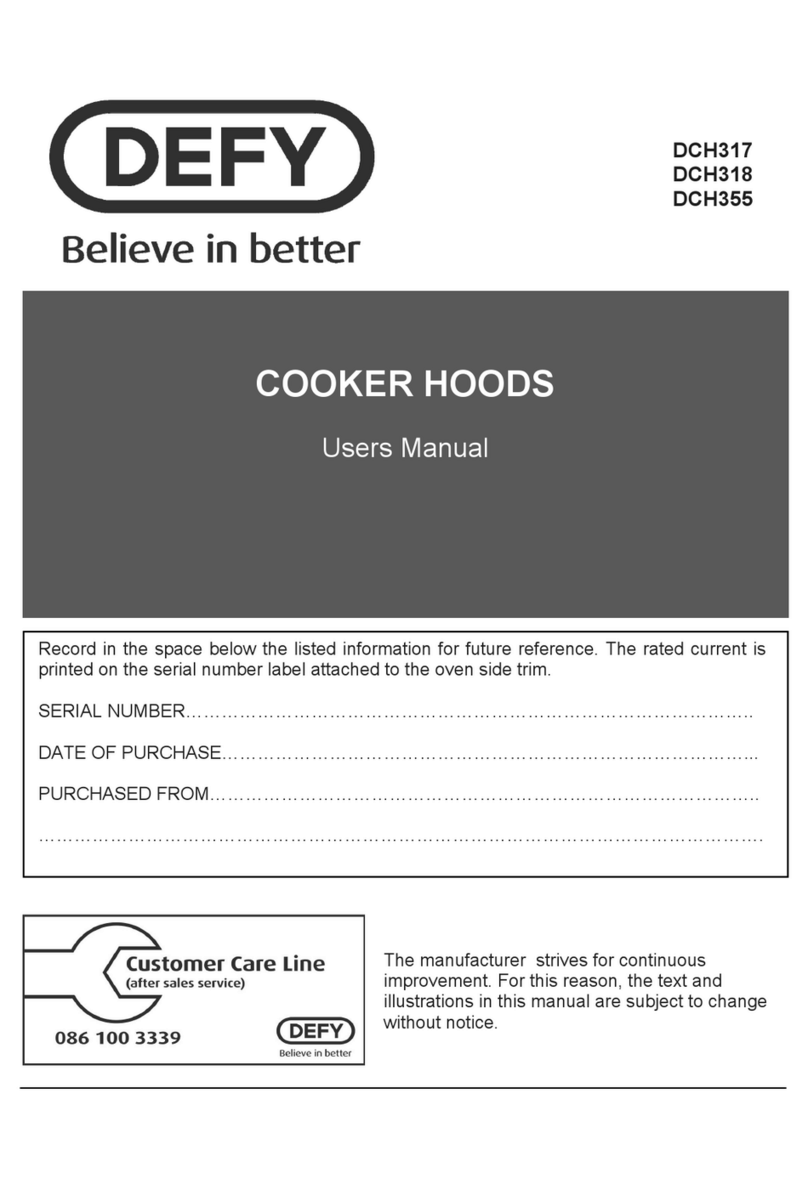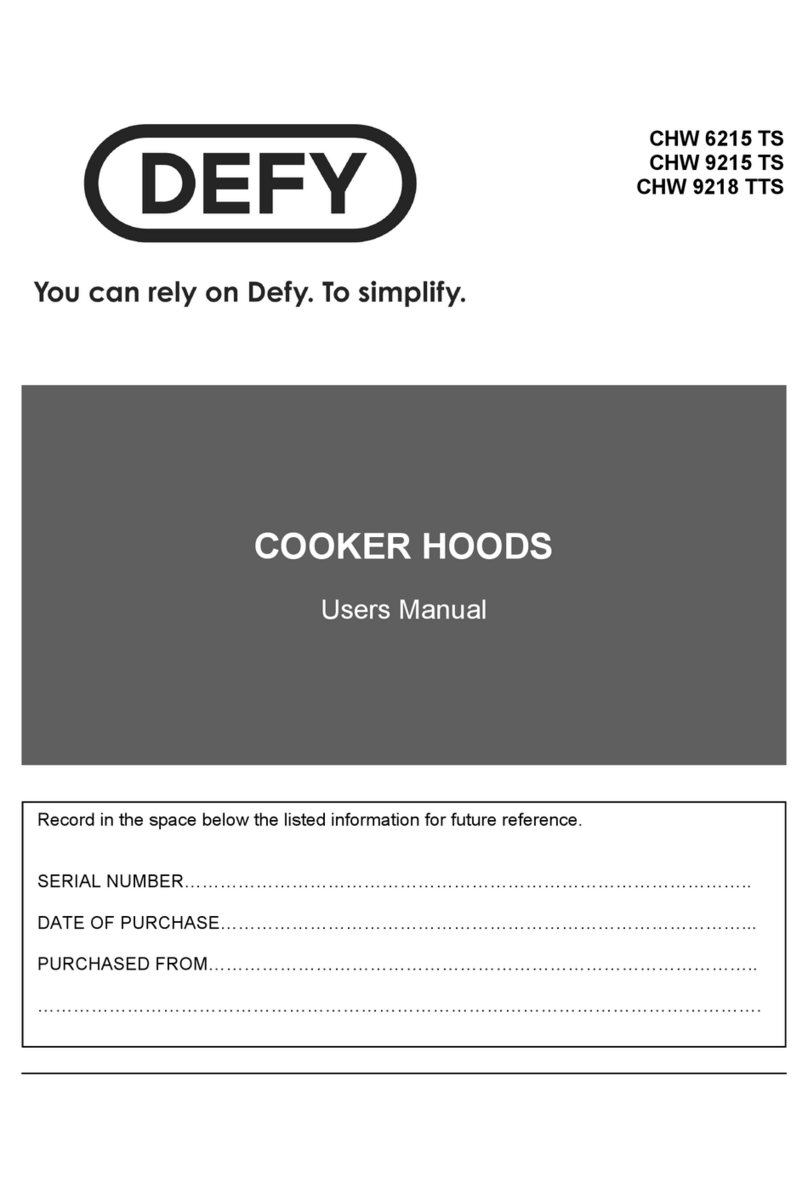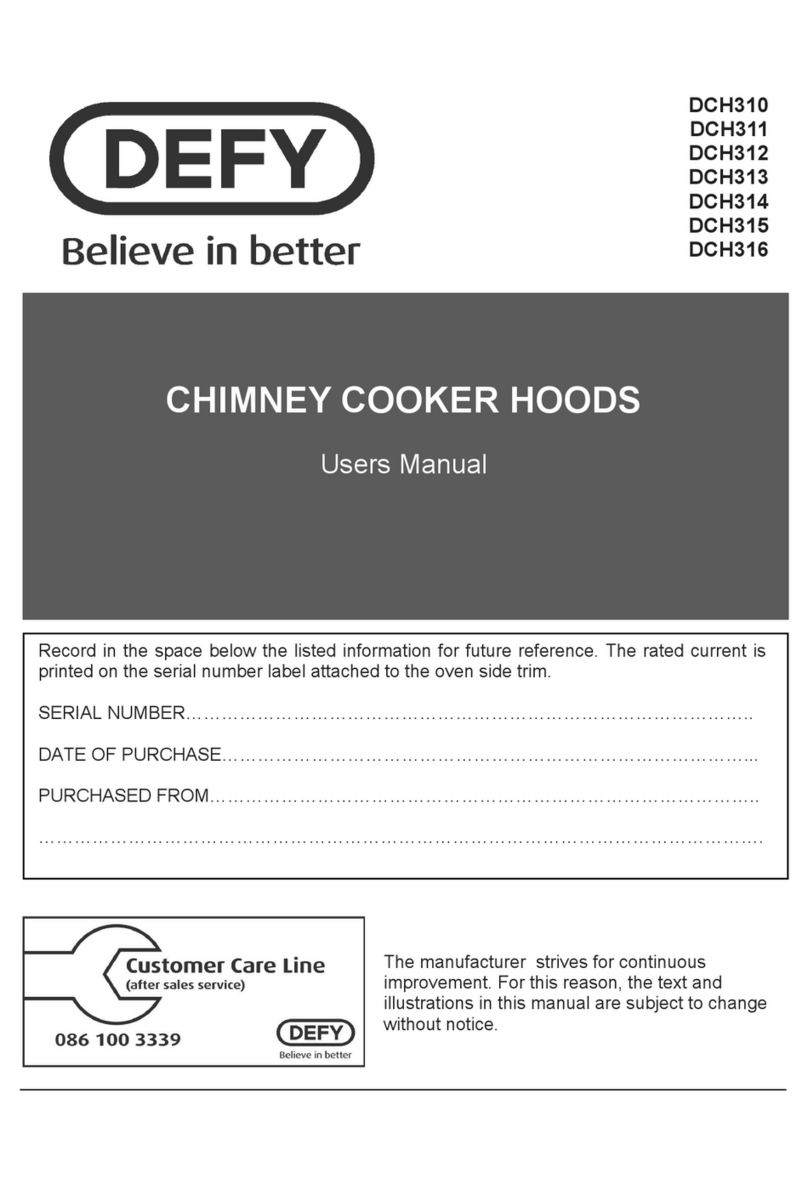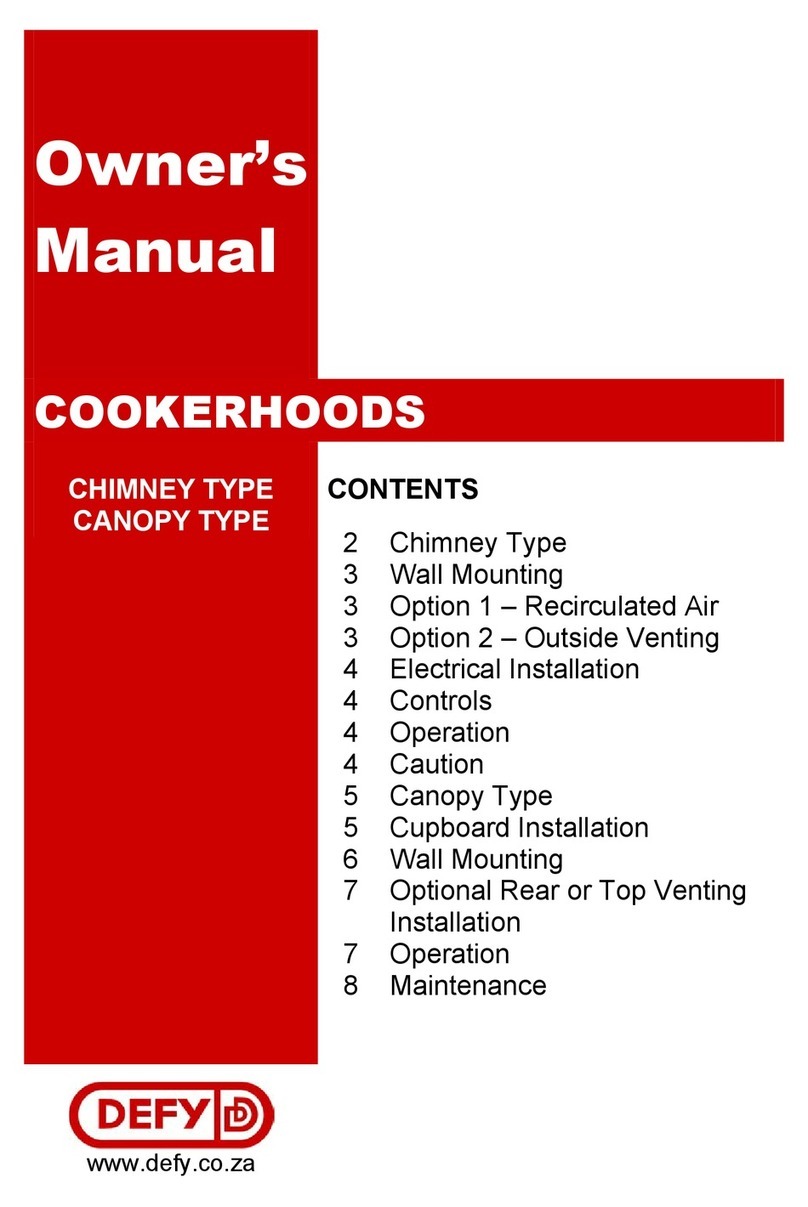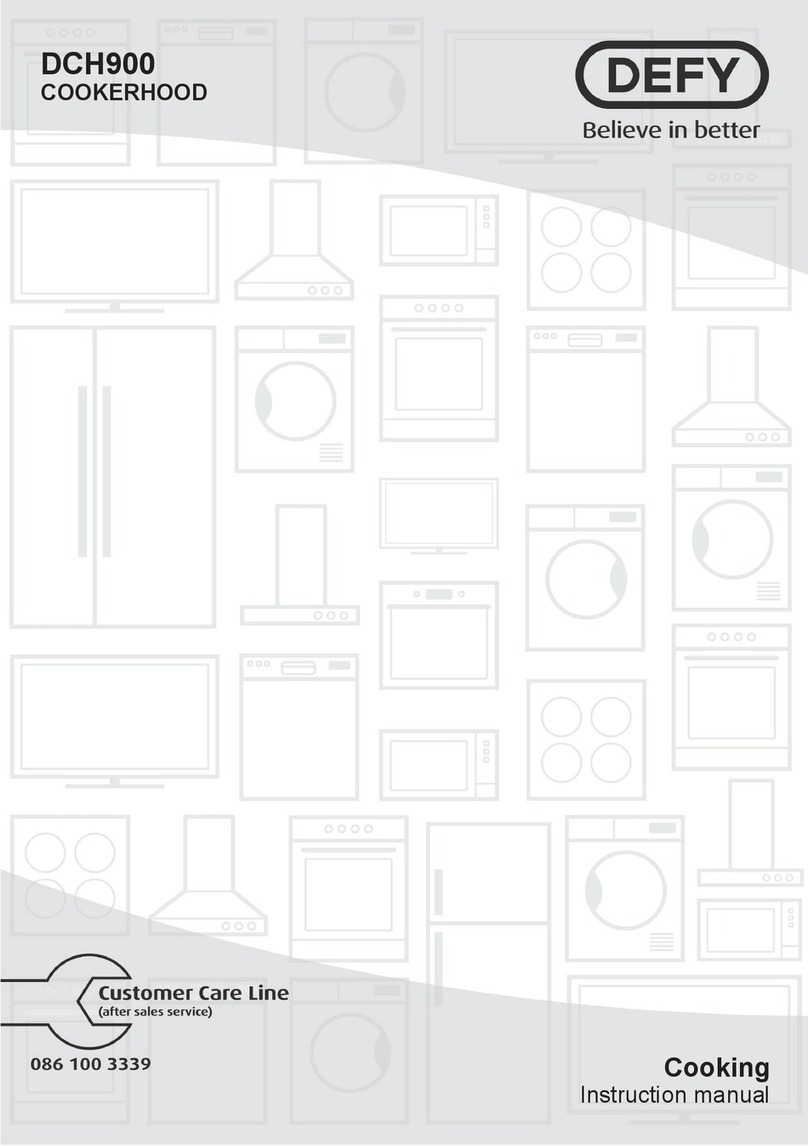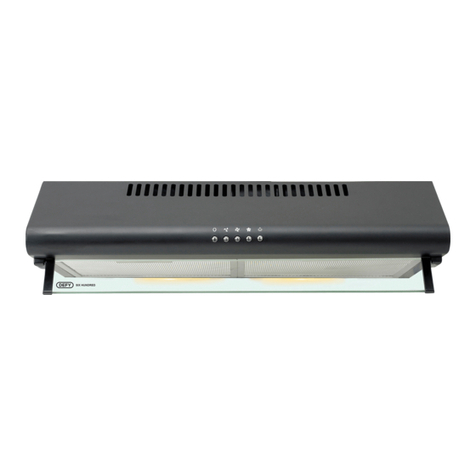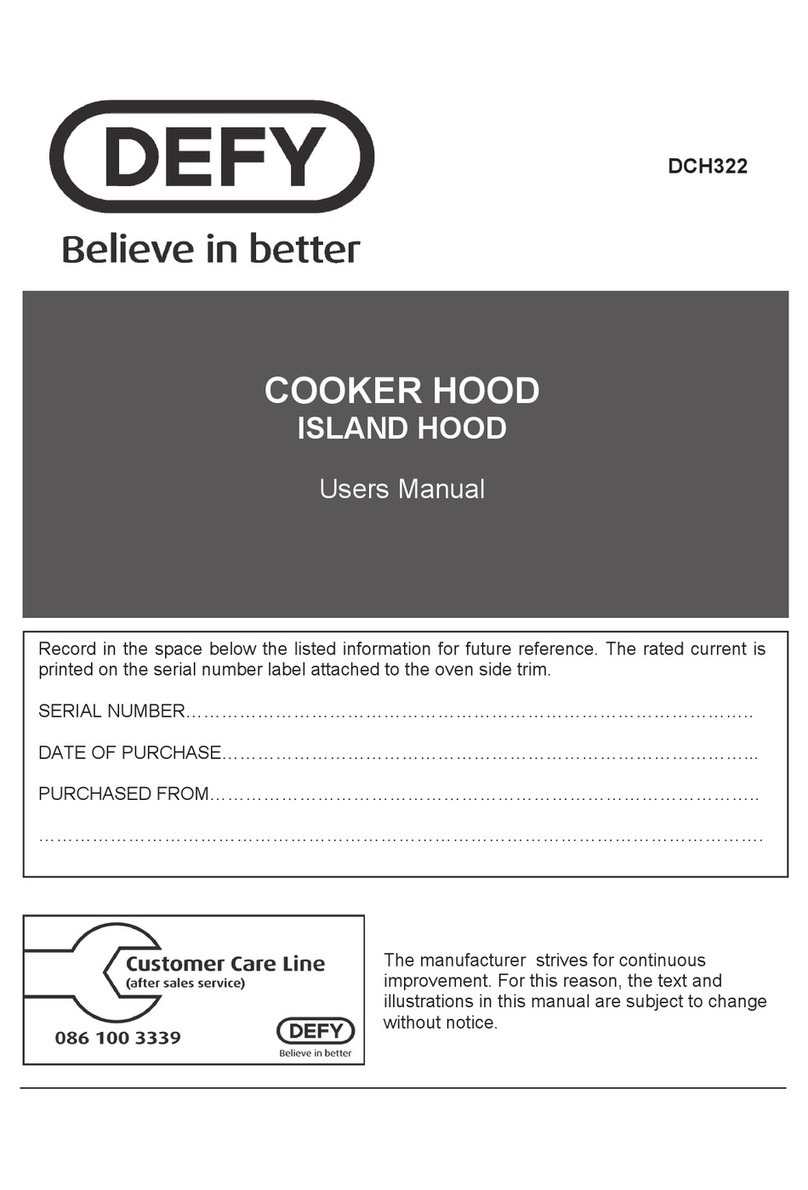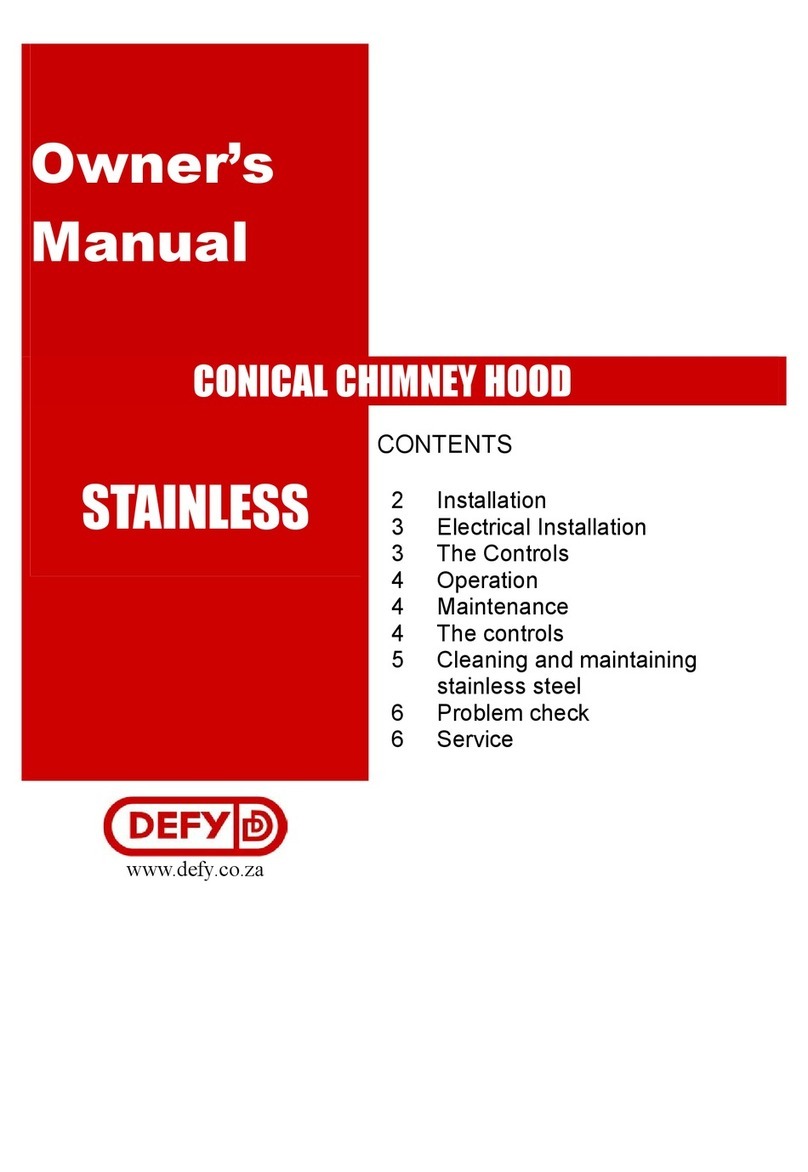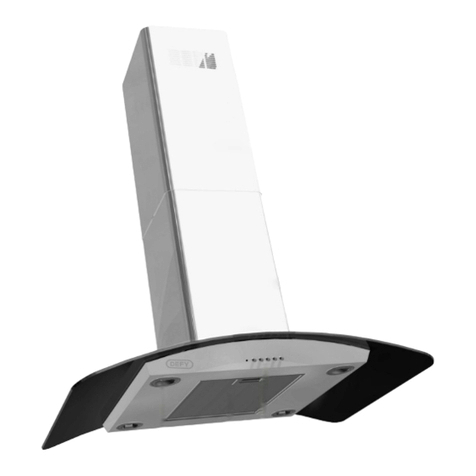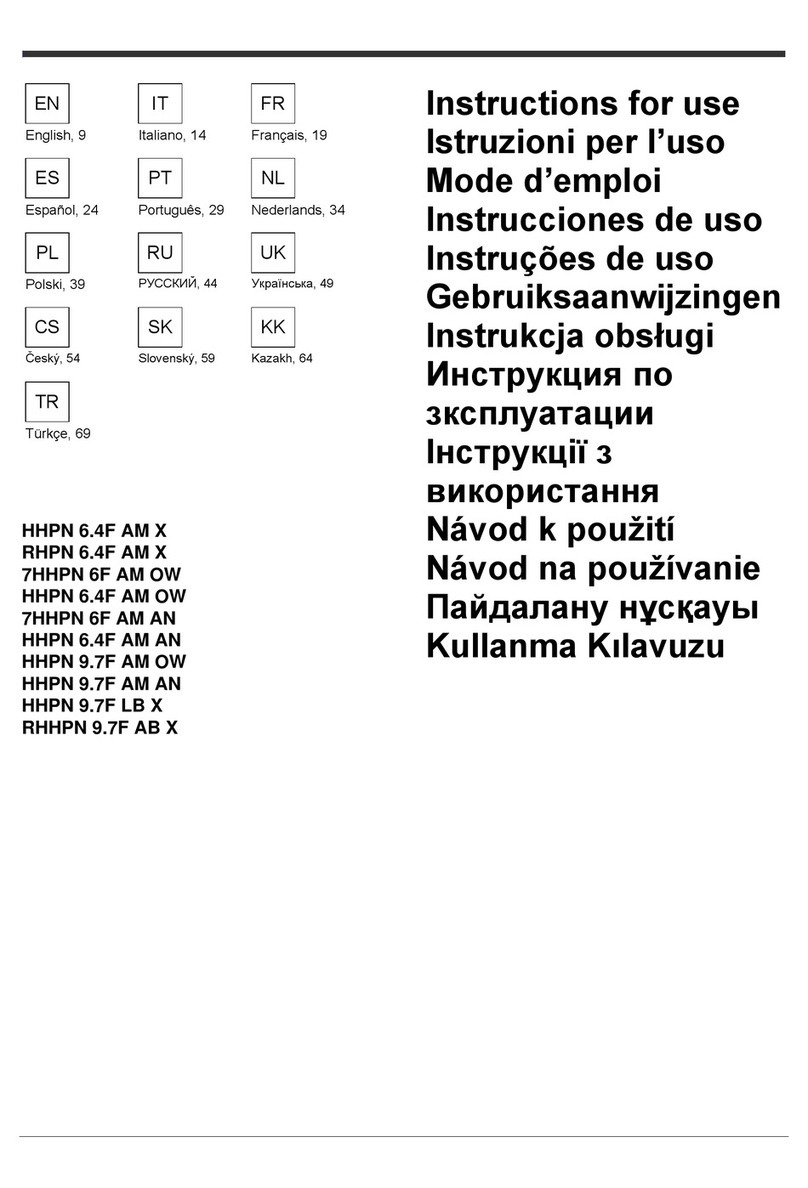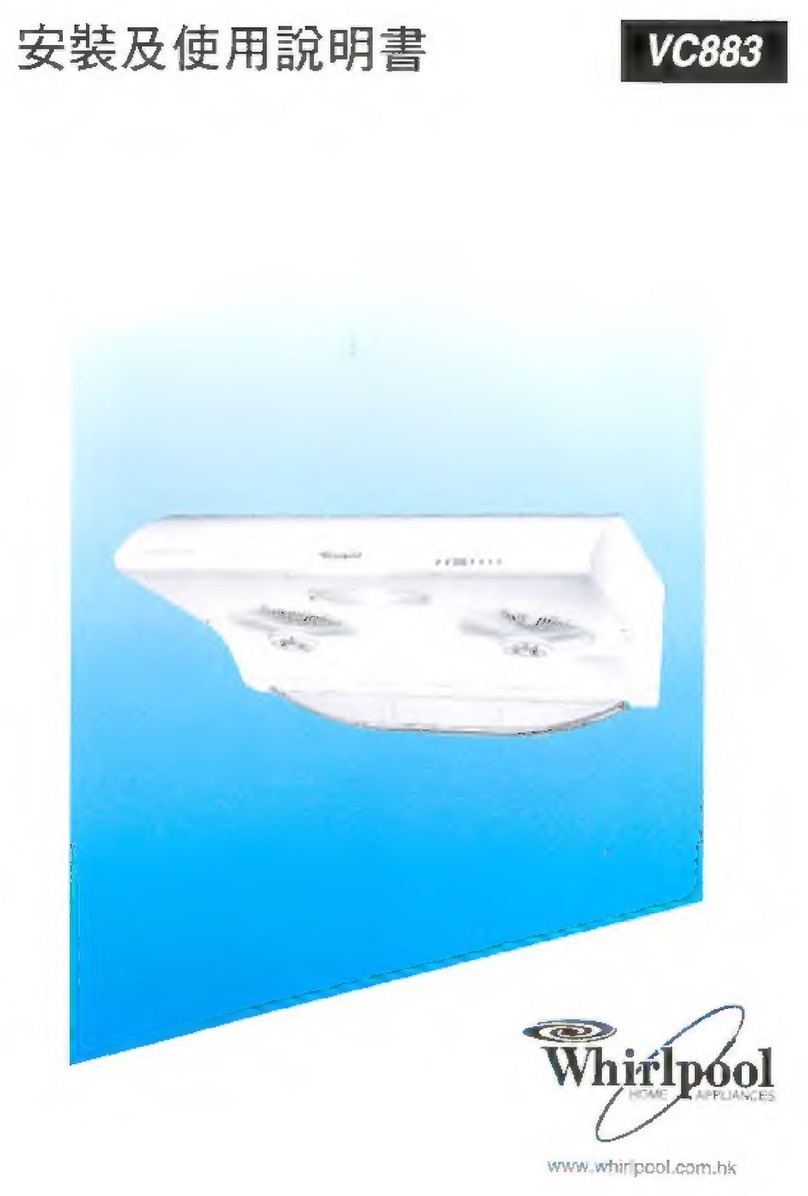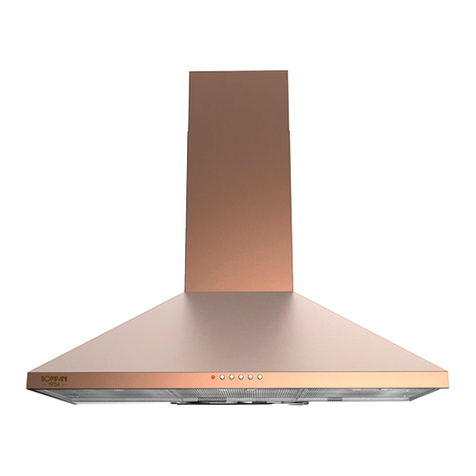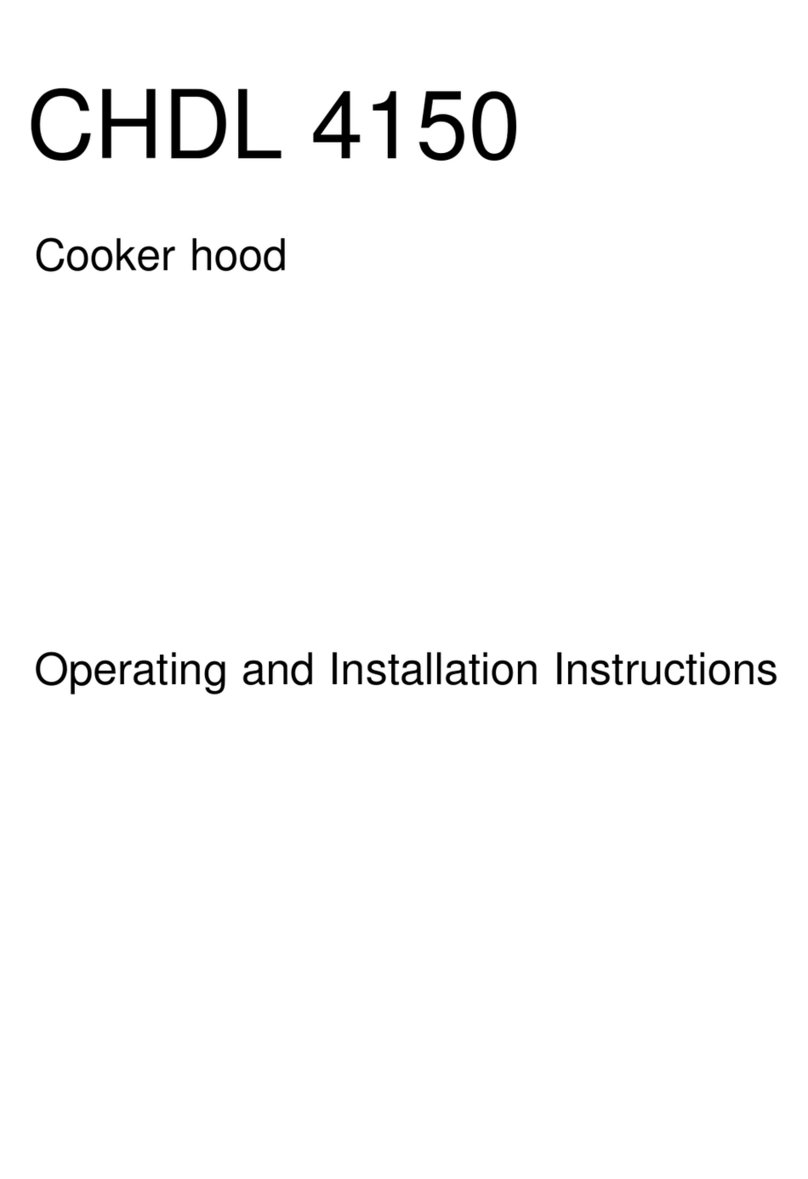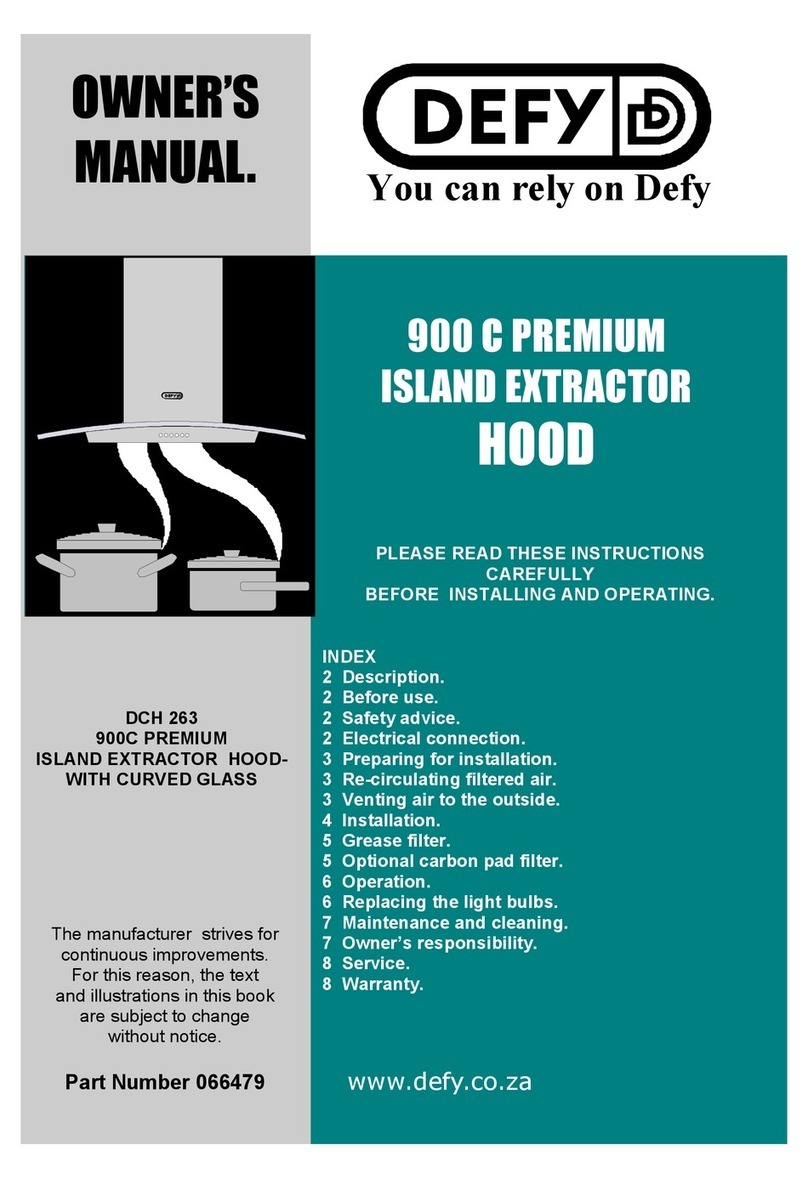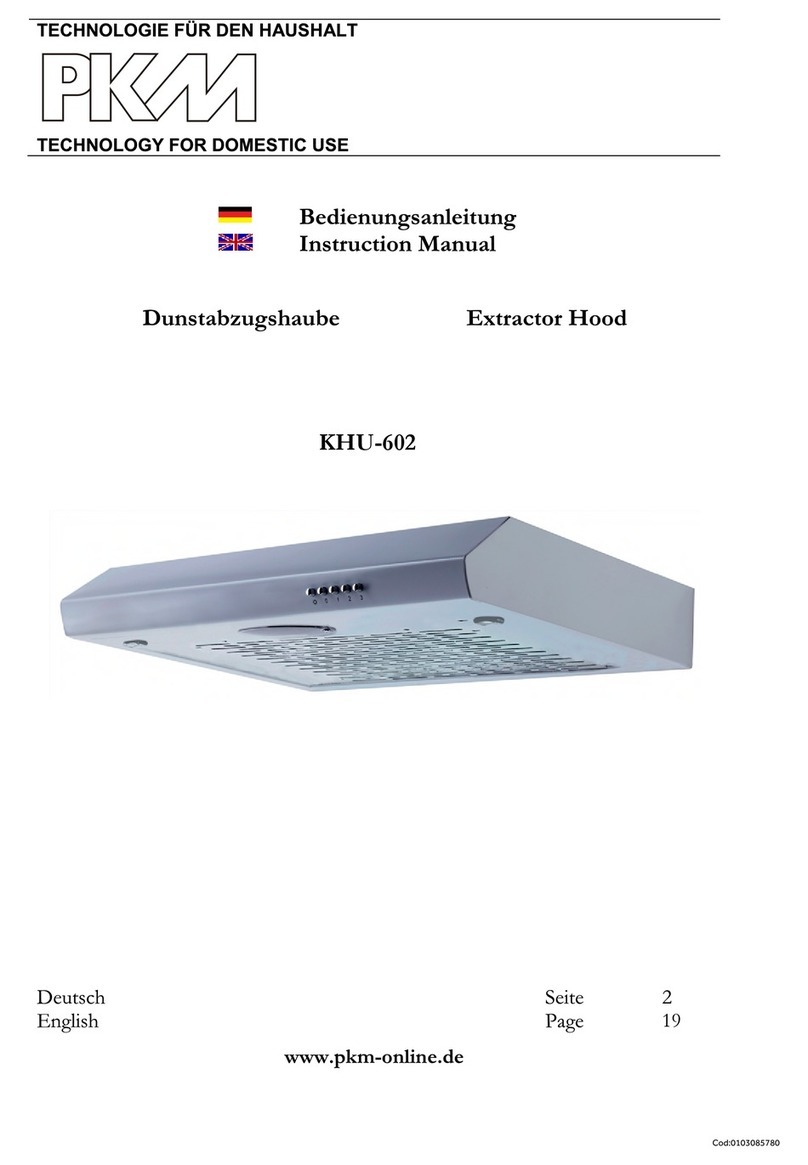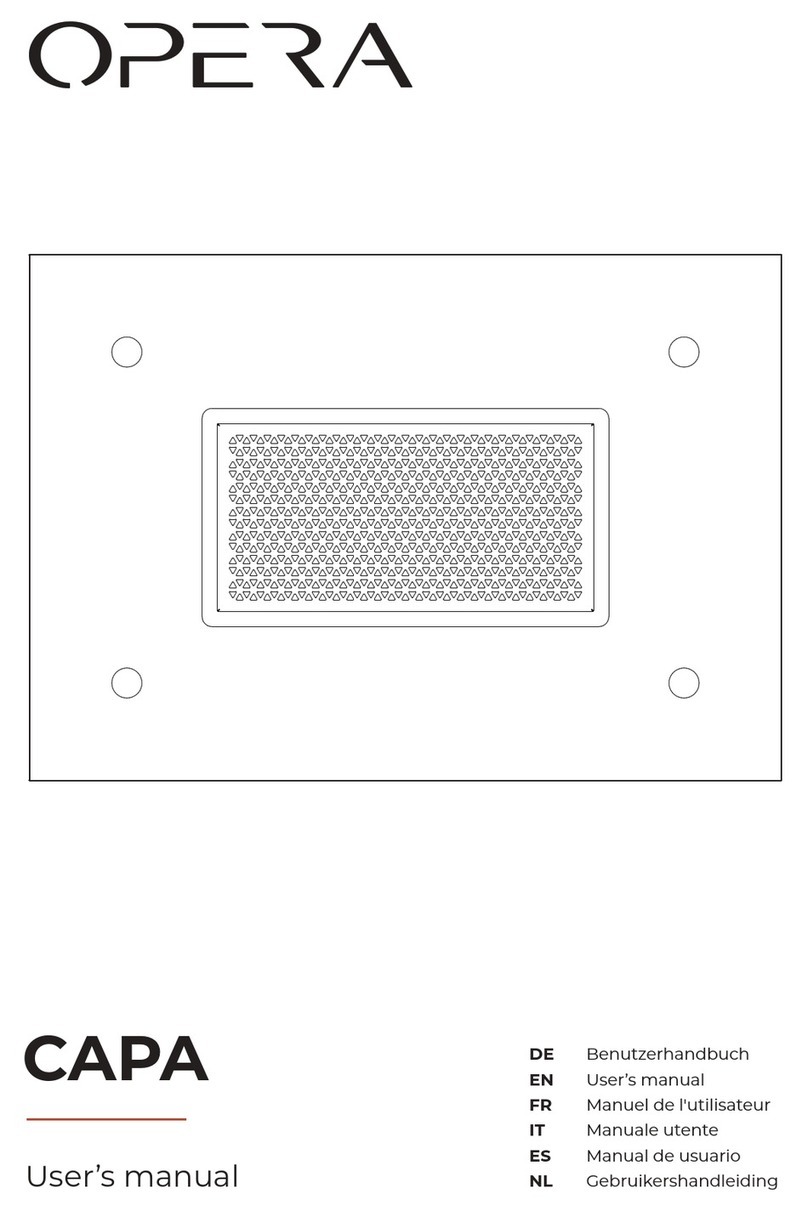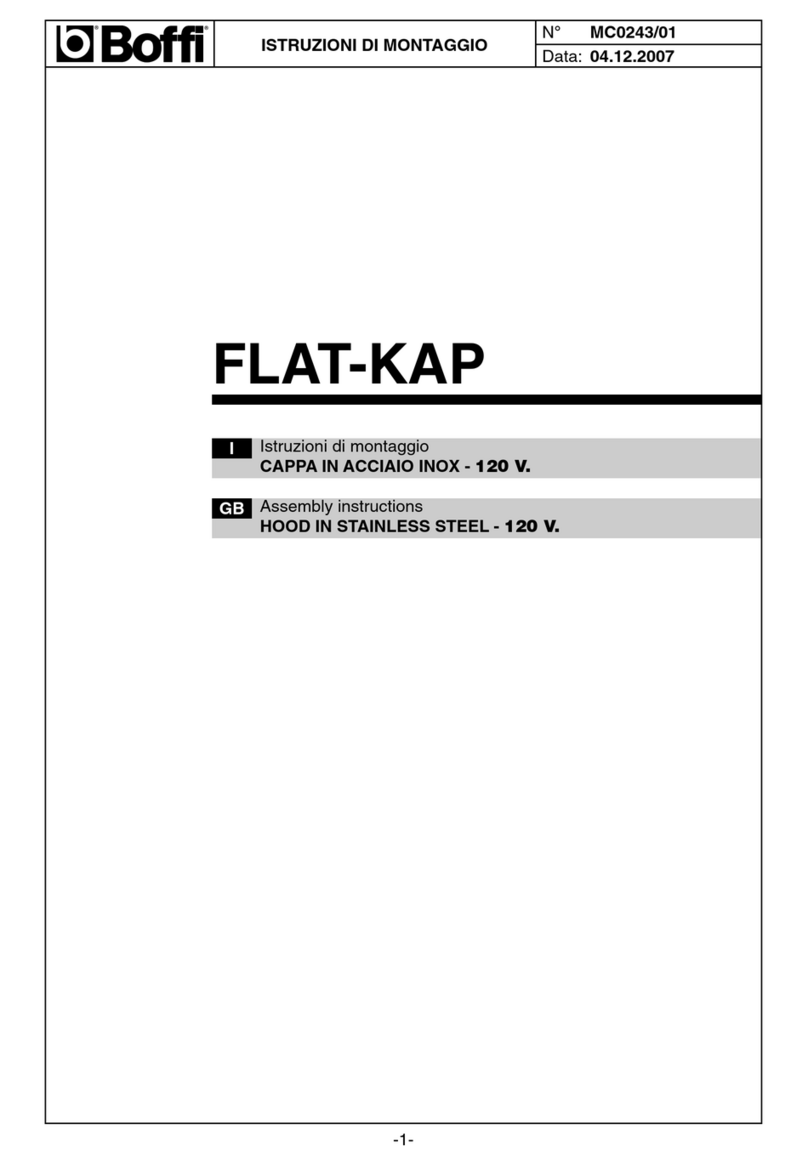Page 12
General cleaning. (Stainless steel)
Stainless steel is not adversely affected by
normal household use but because of its
reputation for durability, it is sometimes
assumed to be indestructible, and therefore
subjected to misuse or even abuse. Care
should be taken to avoid such ‘abnormal
use’.
Cleaning the air filter
In normal operation (1 to 2 hours daily), the
filters must be cleaned every 8 to10 weeks.
The air filter is made of high-density
aluminium. Please do not use a corrosive
detergent on it. Keeping this filter clean will
keep the appliance operating correctly.
Please follow the guideline below.
Maintenance and cleaning
WARNING: Before cleaning any
part of the hood, switch the power
off at the mains. Ensure that it is
switched off at the wall socket and
plug is withdrawn
Keep the motor and other parts
free from water, as this will cause
damage to the appliance.
WARNING: There is a fire risk if
cleaning is not carried out in
accordance with these
instructions.
Cleaning the hood
x All external surfaces and controls can be
cleaned using a little washing-up liquid
applied with a soft sponge or cloth. Wipe
dry using a soft cloth.
x Only use a damp cloth as water could get
into the unit and cause damage.
x Do not use cleaning agents containing
soda; acids; chlorides or solvents.
x Do not use abrasive cleaning agents; e.g.
powder cleaners or cream cleanser and
abrasive sponges; as well as pot scourers
or sponges which have been used
previously with abrasive cleaning agents
as these will damage the surface material.
Do not apply too much pressure
when cleaning the air filter as the
air filter is delicate and too much
pressure will cause damage to it.
1. Put the air filter into clean water at a
temperature of about 40ûC to 50ûC.
2. Pour the detergent on the air filter and
soak for approximately 3 minutes.
3. Wear gloves and gently clean it with a soft
brush.
Cleaning materials. (Stainless steel)
Do use:
x A moist lint free soft cloth or synthetic
sponge.
x Soap, or mild liquid detergent.
x A mild window cleaner.
x Diluted ammonia in warm water.
x A nylon bristle brush.
x Cleaners labelled “Suitable for stainless
steel”.
Do not use:
x A steam cleaner.
x Acid, alcohol, soda, chloride or spirit
based cleaners.
x Coarse abrasive cleaning powders.
x Metallic scourers, steel wool, metal
scrapers, or plastic scouring pads.
x Wire brushes or emery paper.
x So called “silver cleaners”.
Cleaning procedure
x Frequent cleaning is recommended rather
than an occasional aggressive clean.
x Routine cleaning will preserve the
corrosion resistance and the appearance
of the stainless steel for many years.
x Clean the stainless steel as often as
necessary (i.e. when it is noticeably dull or
dirty) and use the simplest cleaning
method that will effectively do the job.
x Use clean water, or a mild detergent
solution applied with a soft cloth or
sponge. Rinse well and wipe dry.
x Always wipe in the direction of the
brushed texture on the stainless steel.
x Periodically apply a fine film of dedicated
stainless steel cleaner or baby oil to the
canopy of the extractor hood to add lustre
and sparkle to the steel.
















